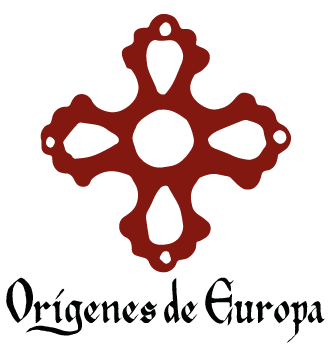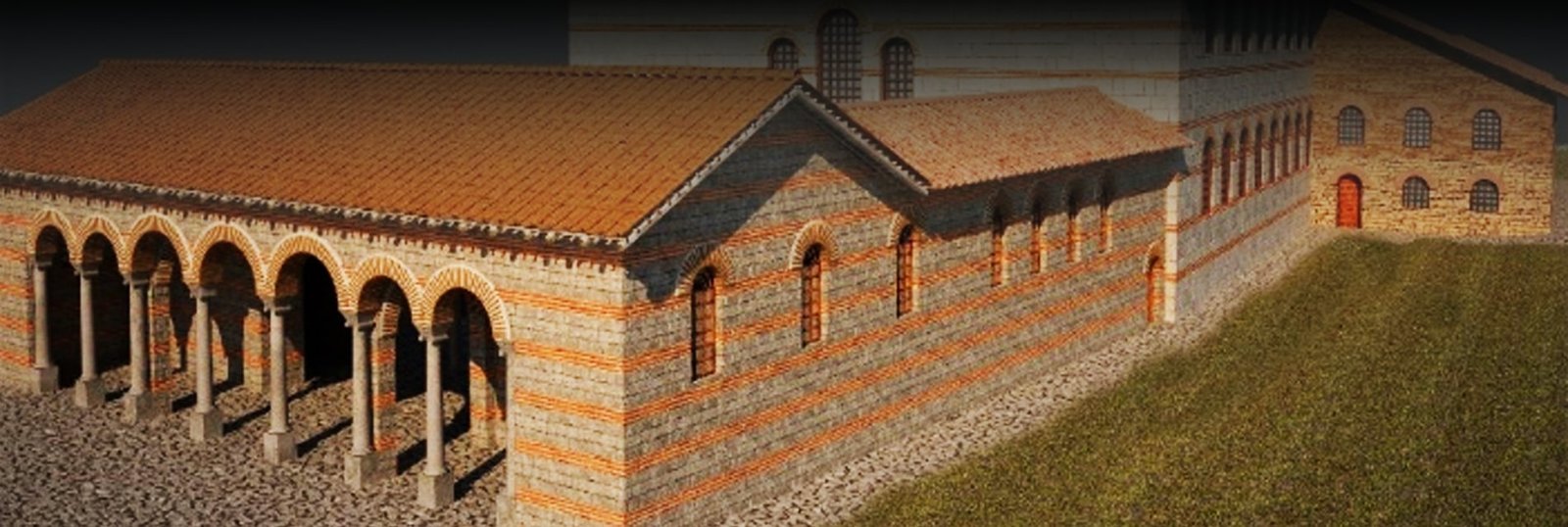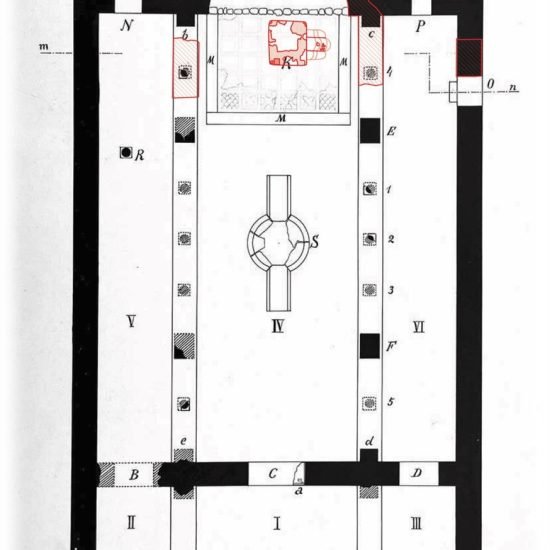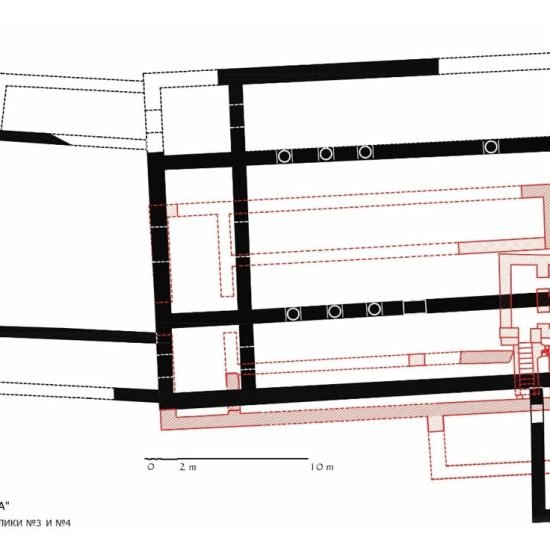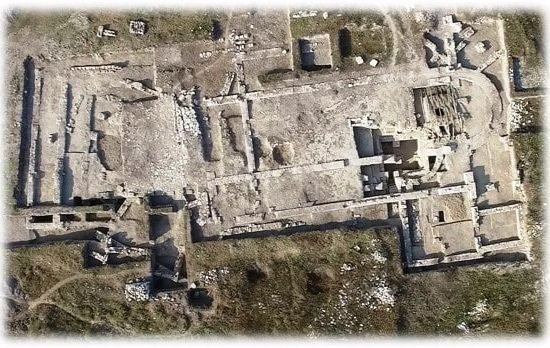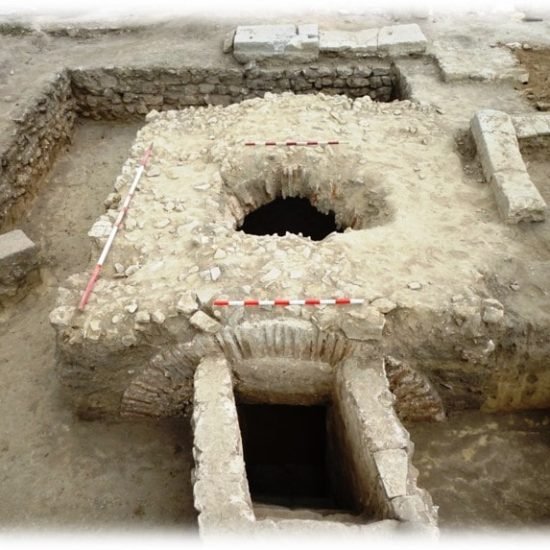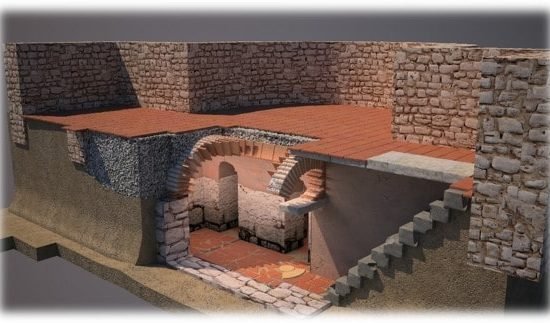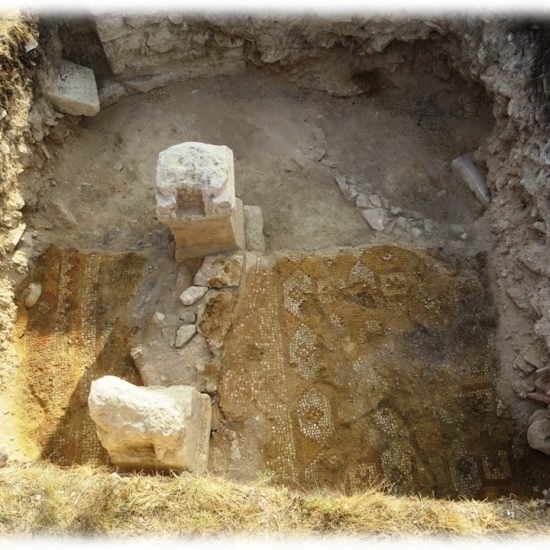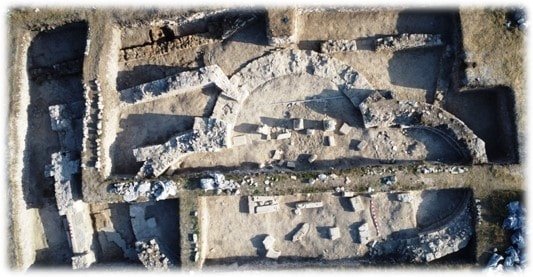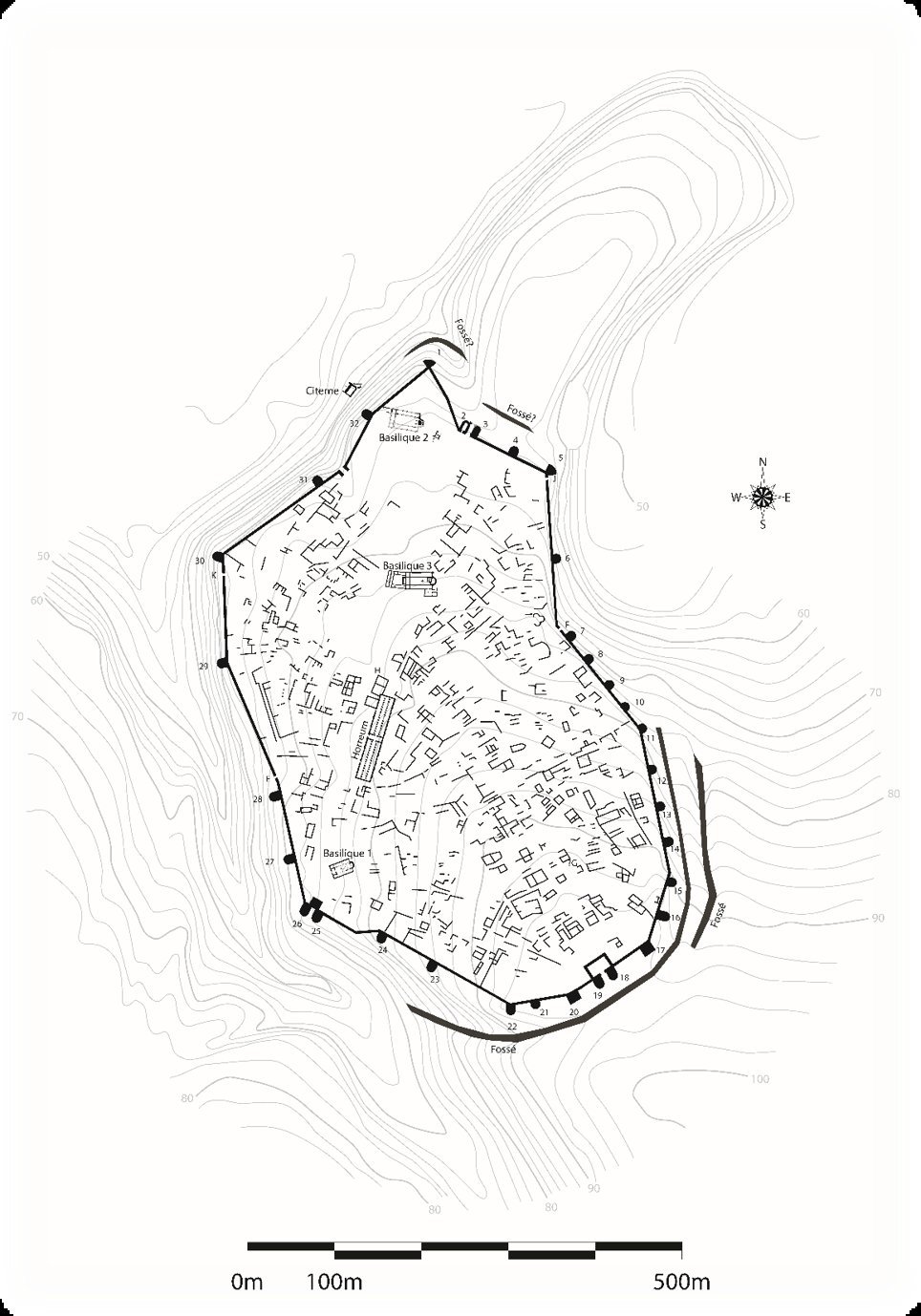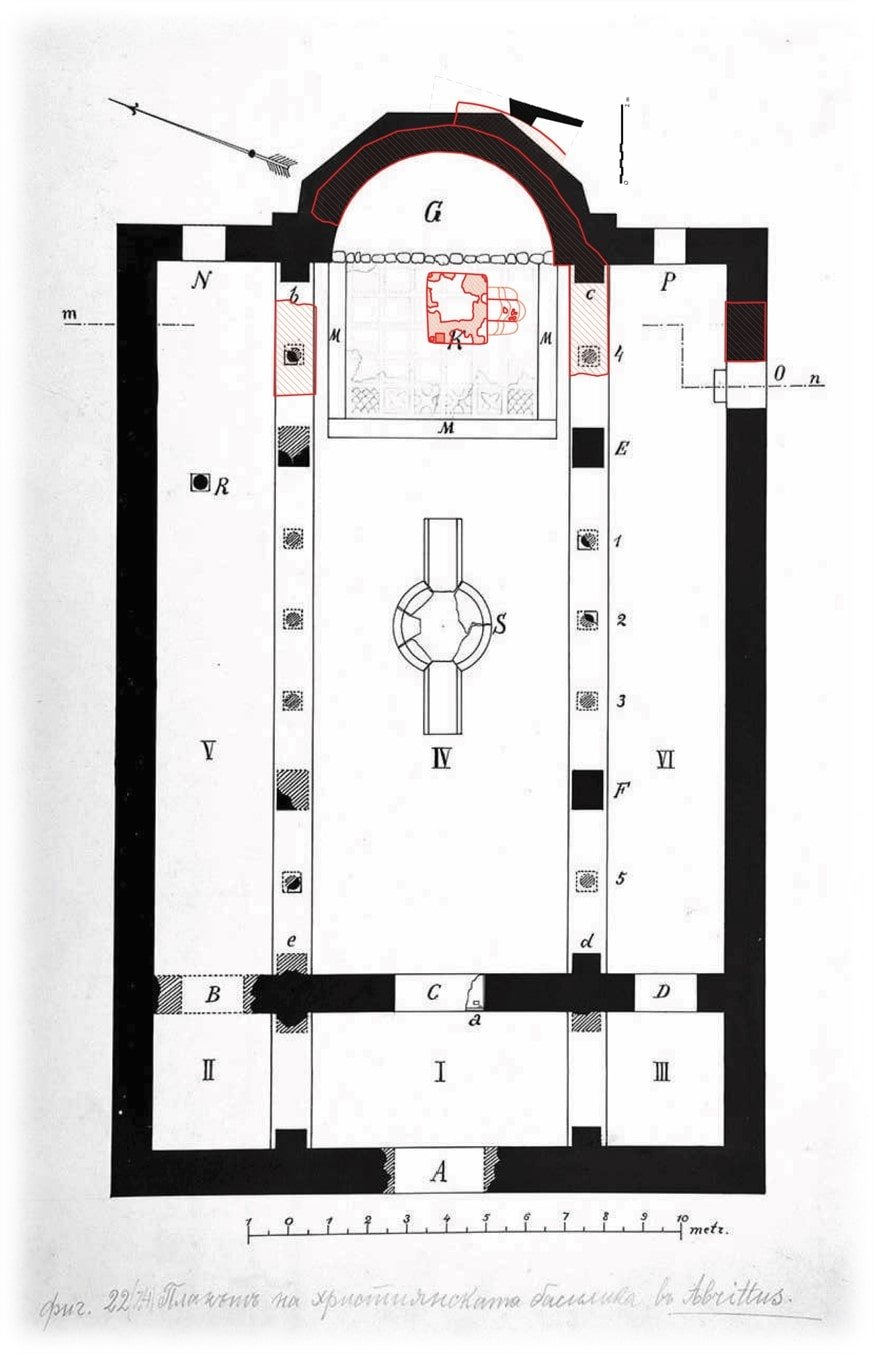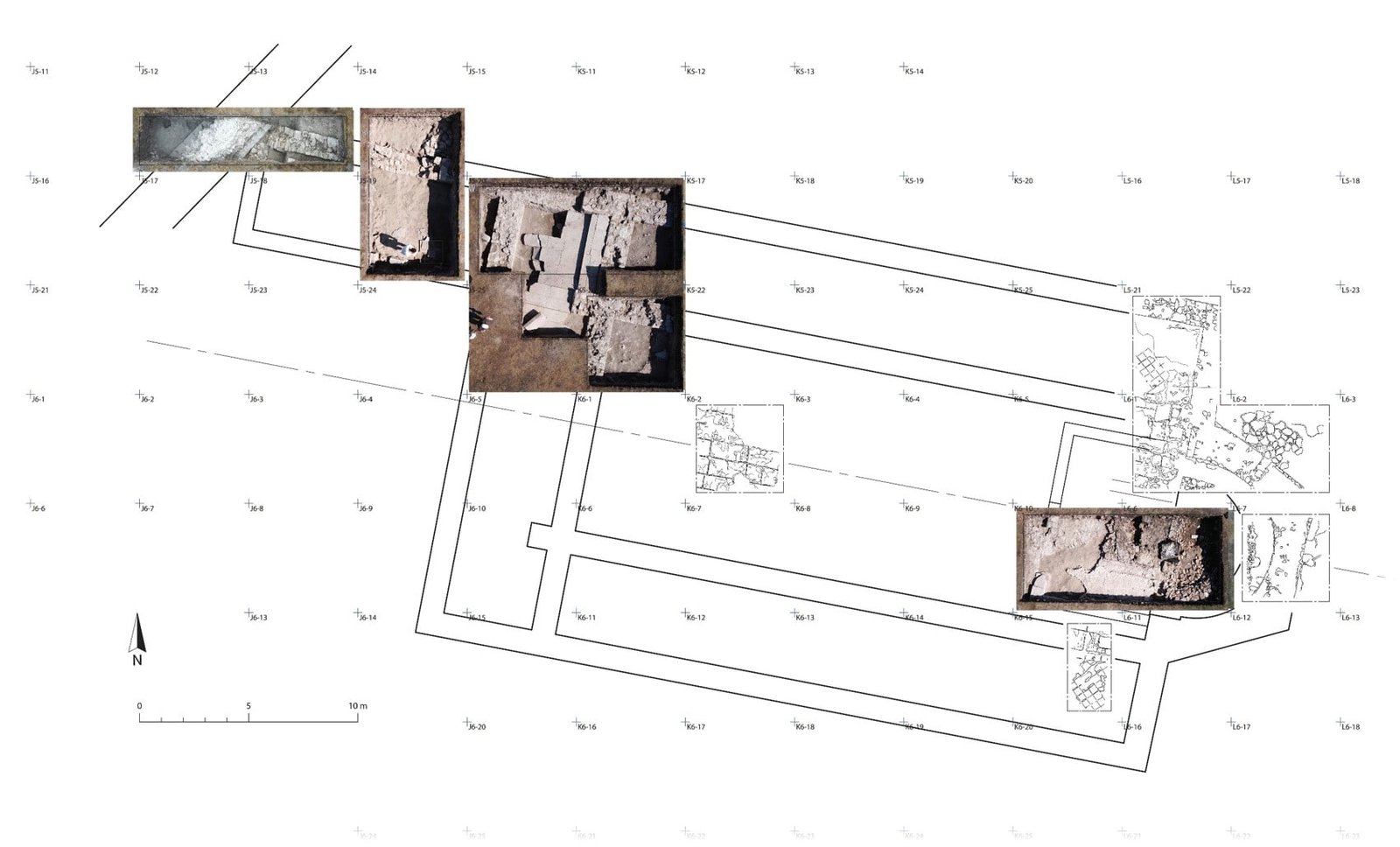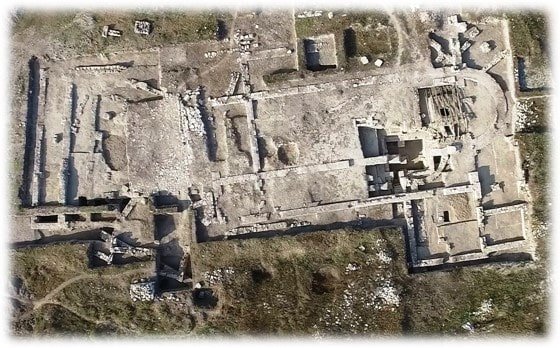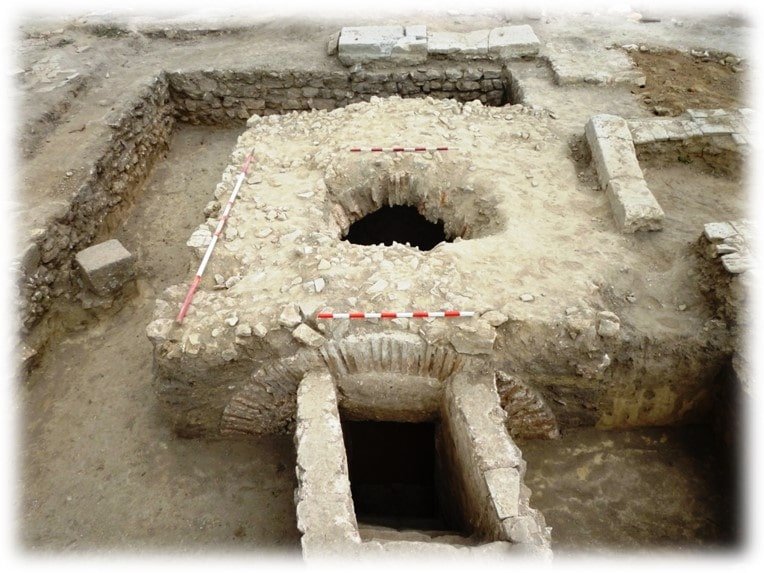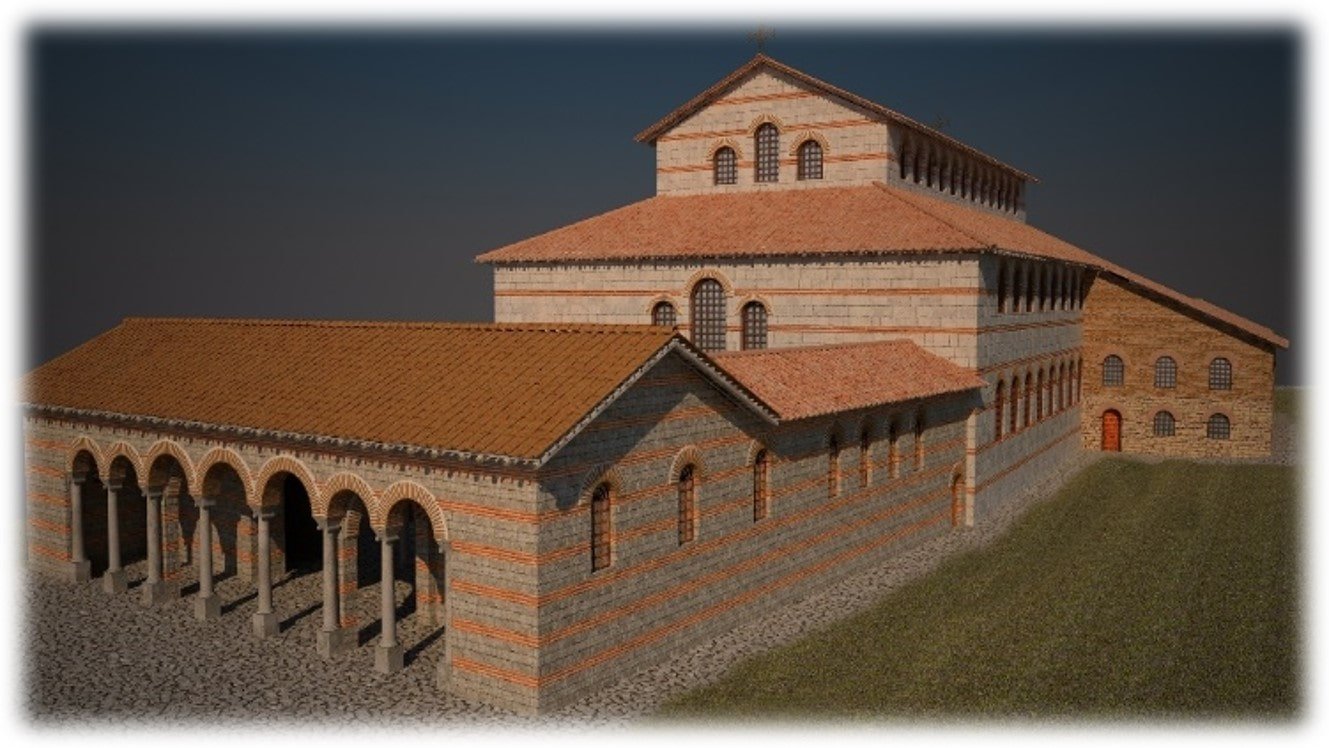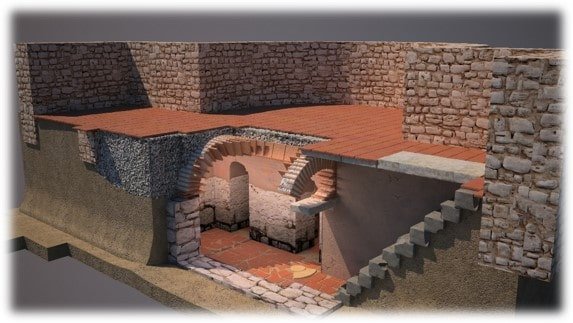Archaeological site of Zaldapa
per person
Zaldapa is the largest fortified Roman-Byzantine town in the interior of the Roman province of Scythia (Dobrudzha). The name Zaldapa itself (Zaldapa, Zeldepa, Zeldipas, Zardapa, Zelpa) is believed to be of a Thracian or Daco-Moesian origin and can literally be translated as «yellow (golden) cold (?) water / river (?)». Indeed, at the foot of the fortress passes a small creek, which forms a meander on which Zaldapa has been built.
The earliest written record is taken to be that of John of Antioch, who notes that the Byzantine general Vitalianus (┼ 520), who raised a rebellion (513) against Emperor Anastasius I, was born in Zaldapa. The Synecdemus of Hierocles (composed c. 527/8) is one of the reliable written records listing Zaldapa among the 15 towns of the province of Scythia. According to the diocesan lists of Scythia, in the 6th century the bishop of Zaldapa was subordinated to the metropolitan of Tomis. Zaldapa is also noted in the list of fortresses rebuilt during the time of Emperor Justinian I (527–565) in the provinces of Moesia Secunda and Scythia. Emperor Constantine VII Porphyrogenitus (913–959) in his De Thematibus mentions Zaldapa for the last time.
The pioneer of Bulgarian archaeology, Karel Škorpil, began the exploration of Zaldapa in the early 20th century. He revealed Christian Basilica No. 1, the huge urban basilica in the town center, and the northern gates. The studies continue to this day.
The Zaldapa Fortress was built a fundamentis in the early 4th century, probably under Emperor Constantine I the Great. It is protected by a powerful fortress wall with 32 towers and 3 gates. Its total area together with three extra muros is about 55 hectares. Among other sites, 6 Early Christian churches and a bishop’s residence have been studied so far.
FORMAL ANALYSIS
In 2017, the team of Prof. G. Atanasov further investigated the Basilica No. 1 discovered by K. Škorpil in front of the town main street next to the southeastern gate. It is three-nave, of the Hellenistic type with a three-part narthex and a five-walled apse over a semicircular foundation. The aisles are separated by 5 columns and two massive pillars. The limestone foundation of a Constantinople-type pulpit was revealed west of the presbytery. It lacks a synthronon, which is peculiar of the most basilicas in the province of Scythia, including cathedrals. The entire bema was covered with a mosaic panel in a checkered pattern with fish scales, Solomon’s Knot and an X-shaped flourished cross (St. Andrew’s Cross). The altar screen was openwork of Prokonnesos marble. Under the mosaic panel, in the center of the bema, the crypt for holy relics was discovered – a pit (1.95 x 1.65 m) carefully dug into the solid loess. The dimensions suggest the laying of a wooden coffin containing a whole skeleton of a martyr?
Basilica No 2. It was marked schematically on the plan of K. Škorpil in the northwestern corner of the fortress not far from the main northern gate. It is a three-nave Hellenistic basilica with a triangular apse, a three-part narthex and an atrium. It is the first (or the second?) basilica in the province of Scythia with a synthronon and deambulatories. Hundreds of tesserae and whole pieces of wall mosaic that covered the apse were found in the pre-apse space – so far the only one undisputedly recorded in the churches of the province of Scythia. It was a luxurious basilica built around the late 5th or the early 6th century and destroyed at the end of the century.
Basilica No 3 with a bishop’s palace from the 6th century. It is a three-nave Hellenistic basilica with a five-walled apse (in substructure semicircular), a three-part narthex and an elongated atrium. There are 3 porticoes and a corridor portico with a colonnade to the main street of the town. Like Basilica No. 1, two entrances flanked the apse and there was an entrance to the south where the episcopal residence was later erected. Openwork marble panels were anchored to the plinth of the bema, in the center was the mensa sacra on 4 round pillars, above it there was the ciborium on columns of red breccia (carolina breccia). In front of the altar screen, the base of a Ф-shaped pulpit of the Constantinople type has been revealed, analogous to the one in Basilica No. 1. A synthronon is missing.
An Early Christian crypt for holy relics was studied under the bema, respectively under the mensa sacra. It is a large vaulted rectangular room oriented north-south (3.80 x 2.50 m; H 2.40 m). The entrance from the south is a kind of dromos with a length of 1.40 m through which 7 steps reach the room. A large cross is depicted on the northern lunette, and a smaller one on the eastern wall. The shrine is almost completely preserved in its authentic interior and exterior. The dimensions, similar to Basilica No. 1, suggest the burial of a dismembered body of a martyr, probably in a wooden coffin.
The Episcopal residence. A two-part building with an entrance vestibule from the north to the apse with a total area of about 120 sq. m was attached at a joint to the southern wall of Basilica No. 3. Most likely, there was also a second floor, built of mud-jointed bricks, as evidenced by a part of a fallen brick wall on the brick floor of the residence’s large hall. There are details of a balcony over the entrance vestibule supported by a column.
Basilica No 4. Under the floor of the Episcopal basilica No. 3 from the early 6th century, an even earlier basilica under No. 4 from the second half of the 4th century was discovered, destroyed around the mid 5th century. It is a three-nave single-apse one with a narthex. The apse is disproportionately large, horseshoe-shaped, and beneath it another crypt was revealed. It is the largest documented so far in today’s Bulgarian lands and the second largest on the Balkans with dimensions of 6.02 x 5.55 – i.e. 33.41 sq.m. The access is along a corridor from the west beginning from the colonnade between the central and southern aisles. Nine steps (6 are preserved) lead to a corridor on the southern wall of which frescoes have been preserved. From it, through two entrances, a connection is made with 2 chambers for holy relics. The crypt was covered with a double vault, from which the eastern lunette of the northern chamber is partially preserved.
Basilica No 5. It is located in the southeastern corner of the fortress, about 250 m east of Basilica No. 1. For now, it is clear that it has three aisles with one semicircular apse. It was probably a parish church built after the beginning of the 6th century and destroyed at the end of the century.
Tetraconch Church (Church No. 6). It is located on a height only 12 m from the eastern fortress wall, and the cathedral (?) church No. 3 is about 105 m in the western direction. The building is a proportional tetraconch with encircling corridors near the northern and probably also the southern conchs, which are separated by 3 columns set up on arae – Late Antique spolia. The apse is 5-walled with a semicircular base. There is a three-part narthex, erected together with the tetraconch, but at a joint. It certainly had a dome. The floor of the tetraconch at Zaldapa was covered entirely with mosaic panels with geometric figures with crosses in the center, and the narthex – with bricks laid on red mortar. In the center of the church a disproportionately large pulpit was constructed, most of its details preserved, including the platform with multi-leaved figure in the center and most of the parapets. Many of the elements of the altar screen have been also discovered, including entire slabs.
Against the background of the 6 large churches, the residence to the largest basilica No. 3, the presence of mosaic panels in the tetraconch and basilica No. 1, the luxurious basilica No. 2 with its mosaic floor and wall mosaics and finally the large crypts for holy relics in basilicas No. 4, 3, 1, and possibly in No. 2, we can argue that Zaldapa was a significant early Christian center in Scythia and in the Lower Danube provinces of the Empire in general. The church construction was definitely most active about the late 5th – the early 6th century.
Hypothetically, it can be assumed that the funds come along the line of the Zaldapa-born General Vitalianus, who at that time was declared Emperor by the army and ruled almost all the provinces of the Balkan Peninsula – respectively had inexhaustible resources. He also gave direct support to the so-called Scythian monks (one of them, Leontius, was his close relative!), who opposed the pro-Monophysite policy of Emperor Anastasius. It is not excluded that they inhabited the rock monasteries located not far from Zaldapa along the Suha River.
Since it is evident that Basilica No. 3 was the largest church in Zaldapa, located at the most prestigious spot, and had a representative crypt for holy relics under the altar, it is safe to assume that it was the Episcopal church of the town. Against this background, the representative stably built annex next to its southern wall with a total area of about 120 sq. m with a direct connection through an entrance to the southern nave of the basilica and data for a two-story building (on the second floor are usually the private rooms of the bishop), with great confidence can be identified as the residence of the Bishop of Zaldapa. Apparently, a requirement proclaimed in church councils was observed, reading Ut episcopus non longe ab ecclesia hispitiolum habeat (The bishop must not live far from the church). After analyzing the written sources, we come to the conclusion that the archbishop of Scythia in Tomis received the status of a metropolitan, respectively 14 suffragan bishops, including the bishop of Zaldapa, after the mid 6th century.
In the hagiographical sources there is no information about saints of Zaldapa. We assume that the town received non-dismembered skeletons of martyrs from the bishop/archbishop of Tomis, which were laid successively in the great crypts of basilicas No 4, 3, 1 and 2(?).116 martyrs are registered in Tomis (the town with the greatest in number saints on the Balkans), which enabled the metropolitan bishop to provide relics for the consecration of churches within the boundaries of his diocese – the province of Scythia.
The Episcopal Residence together with the basilica in Zaldapa were destroyed during the Avar invasion in 585. There was a waning life in the city and around the basilica until the Slavic invasion of 594. Thereafter, Zaldapa was completely abandoned.
GEORGI ATANASOV
- ZALDAPA (Municipality of Krushari, Dobrich district) © PLAN OF ZALDAPA, drawn by Br. M’Barek based on satellite images and publications by K. Škorpil, M. Mirchev, S. Torbatov, G. Atanasov, N. Beaudry, D. Moreau and Y. Valeriev
- Plan of Basilica No. 1 © by K. Škorpil with additions in red by G. Atanasov
- Basilica No. 2 © according to N. Beaudry – 2021 plan
- Basilica No. 3, the Episcopal Residence and Basilica No. 4 © plans according to G. ATANASOV, 2019
- Basilica No. 3, the Episcopal Residence and Basilica No. 4. © PHOT. by G. ATANASOV, 2018
- The crypt of Basilica No. 3 © PHOT. G. ATANASOV, 2016
- Basilica No. 3 and the Episcopal Residence © reconstruction according to G. Atanasov
- Reconstruction of the crypt of the basilica No. 4 © according to G. Atanasov
- Floor mosaic in the nave of the Tetraconch church © PHOT. G. ATANASOV, 2019
- The Tetraconch Church © PHOT. D. MOREAU, 2022
Tour Location
Archaeological site of Zaldapa
| Other monuments and places to visit | A small open air exposition of architectural elements from Zaldapa, including a model of the town. The Regional Historical Museum - Dobrich |
| Natural Heritage | |
| Historical Recreations | |
| Festivals of Tourist Interest | |
| Fairs | |
| Tourist Office | |
| Specialized Guides | |
| Guided visits | |
| Accommodations | In the nearby main town of Dobrich |
| Restaurants | In the nearby main town of Dobrich |
| Craft | |
| Bibliography | |
| Videos | |
| Website | Visit dobrich |
| Monument or place to visit | Archaeological site of Zaldapa |
| Style | Early Byzantine architecture |
| Type | Church architecture |
| Epoch | 4th – 6th century |
| State of conservation | Field conservation, still under study |
| Degree of legal protection | Regional Historical Museum - Dobrich |
| Mailing address | rim_dobrich@abv.bg |
| Coordinates GPS | 43°52′59″N 27°48′34″E |
| Property, dependency | Monument of culture of national significance: Ministry of Culture of Republic of Bulgaria |
| Possibility of visits by the general public or only specialists | Specialists by appointment; public visits only during regular excavations |
| Conservation needs | Yes |
| Visiting hours and conditions | |
| Ticket amount | |
| Research work in progress | |
| Accessibility | Easy |
| Signaling if it is registered on the route | |
| Bibliography | Selected works Атанасов, Г. 345 раннохристиянски светци-мъченици от българските земи (І-ІV в.) София. Атанасов, Г. Крипты для святых мощей в базилика храннехристианского города Залдапа и практики в Черноморских епархиях Скифия, Вторая Мезия и Херсонес ІV-VІІвв. –В. Изучение и сохранение древних сакралных пространств. Симферопол, 2020, 11-16. Торбатов, С. Късноантичният град Залдапа. София, 2000. Adameşteanu, D. Abrittus. – Enciclopedia dell’ Arte Antica, 1, Roma, 1958, p. 6 Atanasov, G. Les monastères rupestres le long de la rivière Sucha, dans le region de Dobrudja de Sud. – Byzantinoslavica, 1–2, 2011, 189–218. Atanasov, G. Christianity along the Lower Danube Limes in the Roman Provinces of Dacia Ripensis, Moesia Secunda and Sctia Minor (4th–6th c. AD). – In: The Lower Danube Roman Limes. Sofia, 2012, 327–380. Atanasov, G., I. Valeriev, V. Yotov. The crypt in the sanctuary of the Basilica no. 3 at the Ancient city of Zaldapa (Province of Scythia). – Ниш и Византиja, 15, 2017, p. 123-132. Atanasov, G., I. Valeriev. La résidence épiscopale à proximité de la cathédrale de la ville romano-byzantine de Zaldapa dans la province de Scythie- Archaeologia Bulgariсa, 1 , 33-58. Atanasov, G., I. Valeriev. Basilica Nr 1 with a Newly Discovered Crypt from the Roman/Early Byzantine City of Zaldapa. Addenda et Corrigenda. - Archaeologia Bulgariсa, 2 (2021), 45 – 80. Dana, D., I. Valeriev, D. Moreau. Un théonyme et des noms thraces nouveaux dans une dédicace grecque découverte à Zaldapa (Mésie Inférieure). – Zeitschrift für Papyrologie und Epigraphik, 202, 2017, p. 158–162. Moreau, D. Les moines scythes néo-chalcédonienes (de Zaldapa?). Étude préluminere á une prosopographie chrétienne du Diocès des Thraces. – В: Сборник в чест на 60 години проф. дин Георги Атанасов (= Добруджа, 32), 187-202. Moreau D., Atanasov, G., Beaudry, N. The Archaeology of the Late Roman City of Zaldapa: The Status Quaestionisin 2016 (with an Appendix on Seasons 2017-2019). – In: Archaeology of a World of Changes. Selected Papers from the 23rd International Congress of Byzantine Studies (Belgrade, 22-27 August 2016) –In memoriam Claudiae Barsanti, D. Moreau, C. Snively, A. Guiglia, I. Baldini, L. Milanović, I.Popović, N. Beaudry, O. Heinrich-Tamáska eds., Oxford (BAR International Series 2973, 2020, 35-55. Popova, V., Atanassov, G. New Data on the Apse mosaic of Basilica No 1 in Zaldapa/Bulgaria. - Ниш и Византja, 18, 175-188 |
| Videos | |
| Information websites | Krushari Municipality |
| Location | Between Abrit and Dobrin villages, in the site of Kaleto, Krushari Municipality |
